
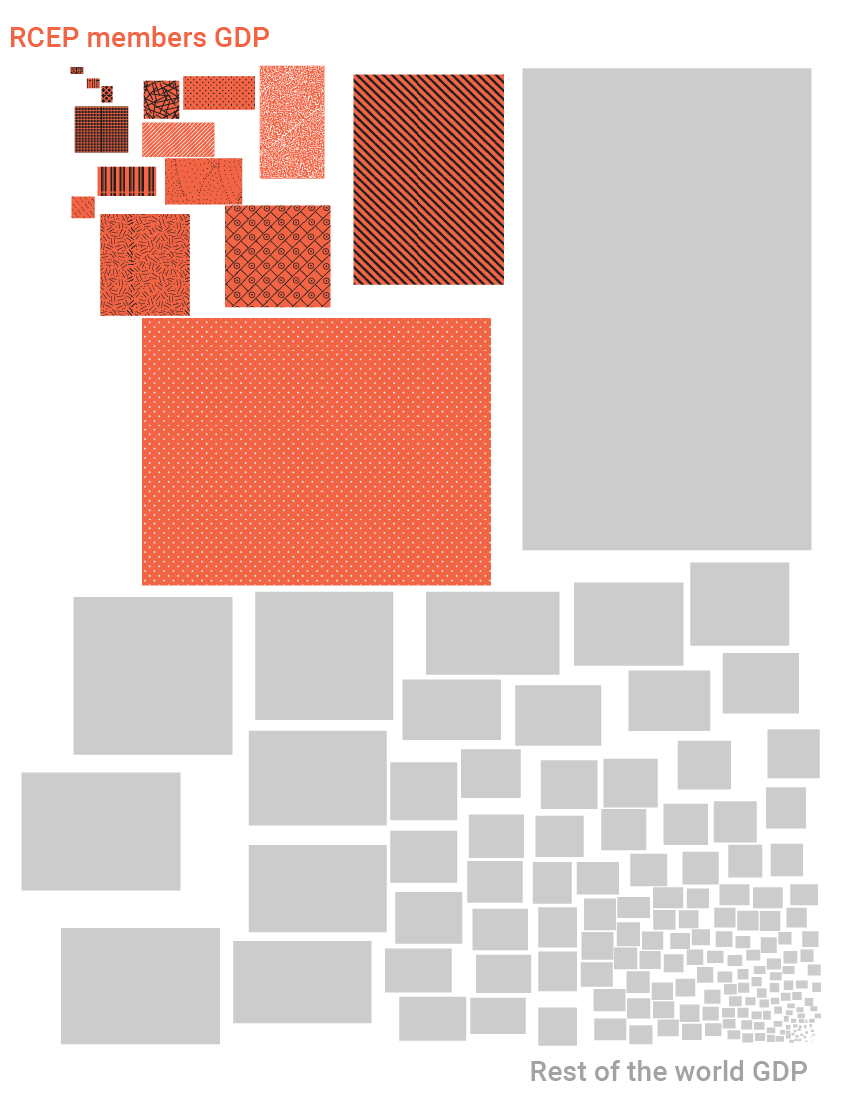
World’s largest free trade pact
On November 15, 2020, 15 Asia-Pacific nations signed the Regional Comprehensive Economic Partnership (RCEP), the world’s largest free-trade agreement (FTA). It includes China, 10 Asean nations and four regional trade partners: Australia, Japan, New Zealand and South Korea. RCEP covers almost one-third of the world’s population and about one-third of its gross domestic product.
RCEP will progressively lower tariffs and aims to counter protectionism, increase investment and allow more free movement of goods.
RCEP would also represent the first ever FTA between China, Japan and South Korea – Asia’s largest, second-largest and fourth-largest economies.
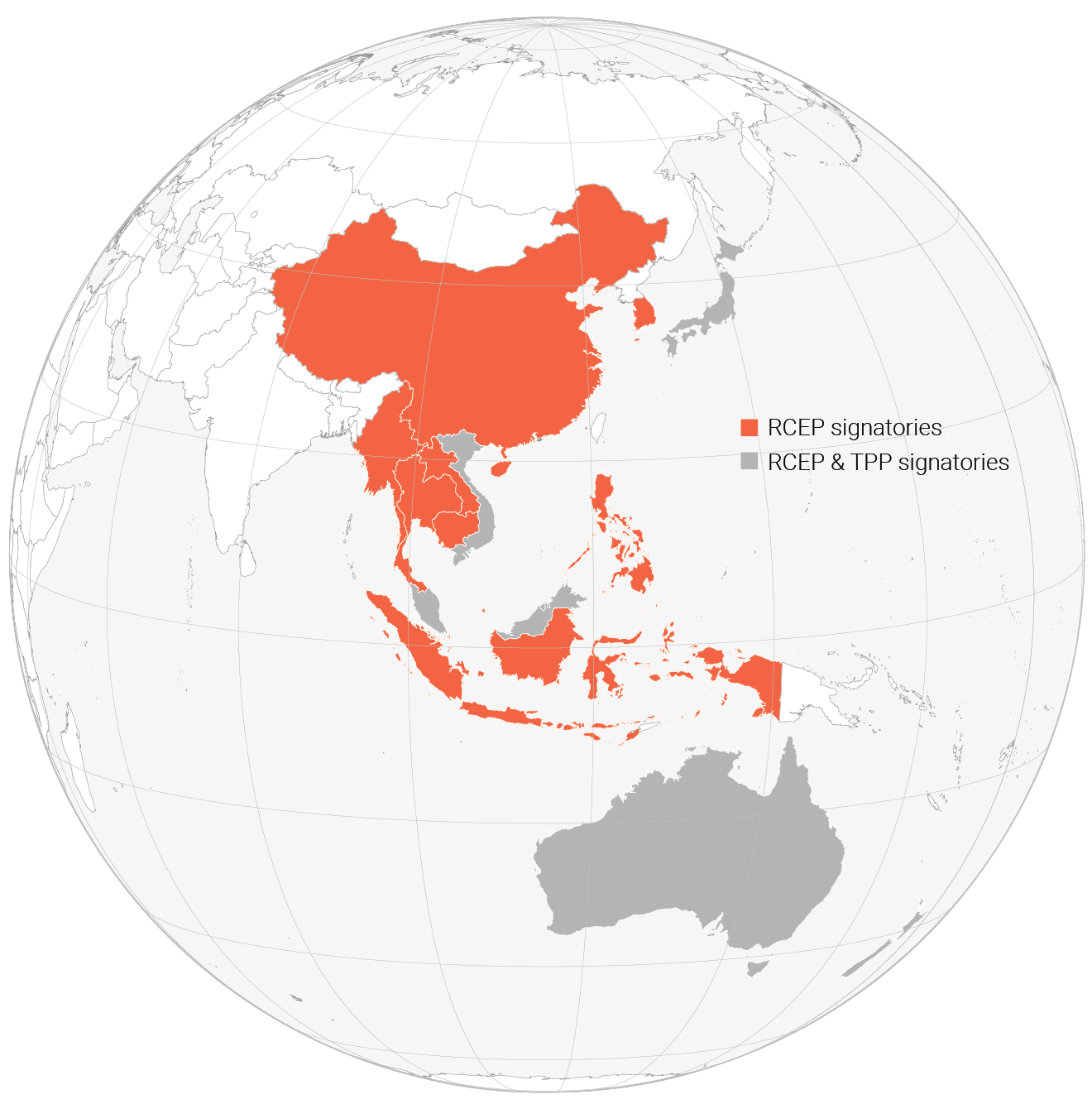
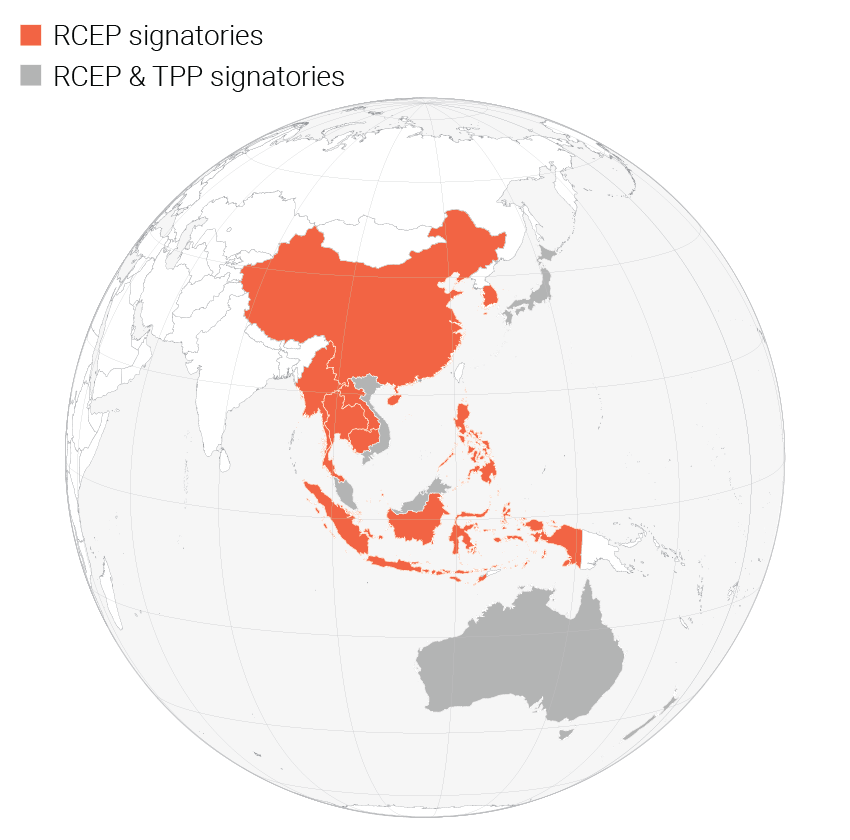
Earlier RCEP negotiations included India but New Delhi withdrew in 2019 due to concerns about competition with manufactured goods from China and agricultural products from Australia.
Alternative to the CPTPP
RCEP has been regarded as a China-backed alternative to the US-led Trans-Pacific Partnership (TPP). The TPP reduced or eliminated tariffs across the 12 signatories, liberalised the trade of goods and services, and opened foreign investment among its members’ markets.
The TPP, which excluded China, was devised as part of Barack Obama’s “Pivot to Asia”. In 2016, it was signed by the US and 11 other countries, including four members of Asean. However, US President Donald Trump withdrew the US from the deal on his first day in office in 2017. Without the US, the other signatories agreed to a revised version of the deal, known as the Comprehensive and Progressive Agreement for Trans-Pacific Partnership (CPTPP).
The CPTPP aims for stricter common standards on labour issues, environmental protection and dispute resolution than those proposed in the RCEP. Trade experts said that while the RCEP did not quite meet the high standards of the CPTPP, it would go a long way to lowering trade barriers in Asia.
Trade history
FTAs are international treaties between two nations, or multiple nations in a bloc, to reduce tariffs on trade, and can include economic standards for the role of the state. China has engaged in 24 FTAs, including 16 that have been signed and implemented. The first framework agreement was signed between China and Asean members in 2002.
China’s trade balance
China became the world’s largest exporter of goods in 2009 and the largest trading country in 2013, surpassing the US.
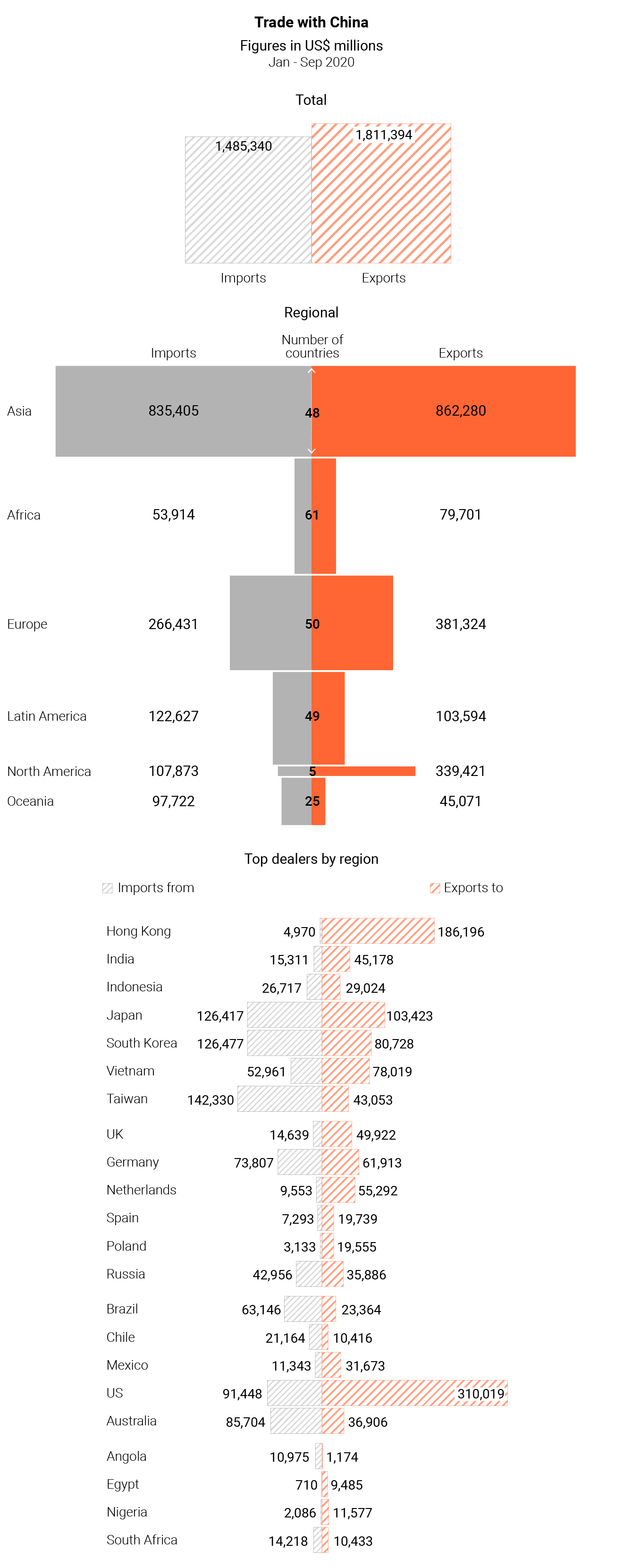

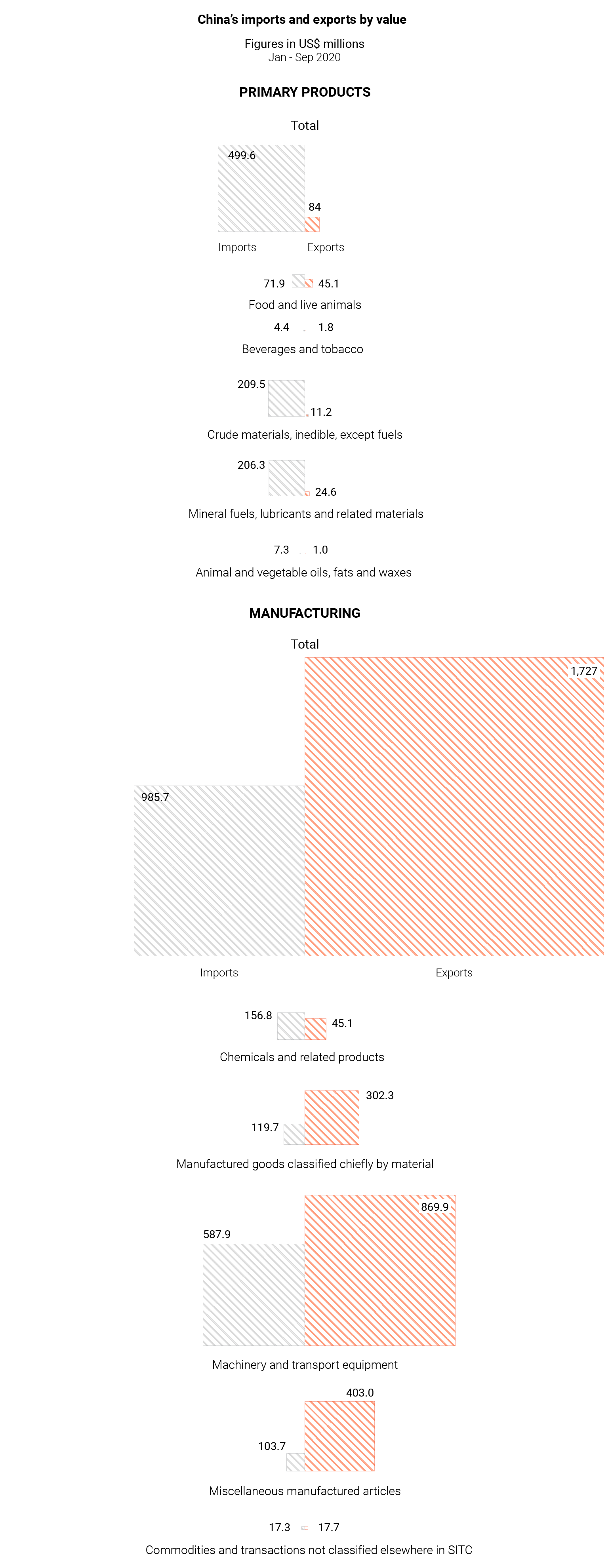

Creative Director Darren Long.
Sources: World Bank; The Ministry of Commerce of the People’s Republic of China; The General Administration of Customs of China